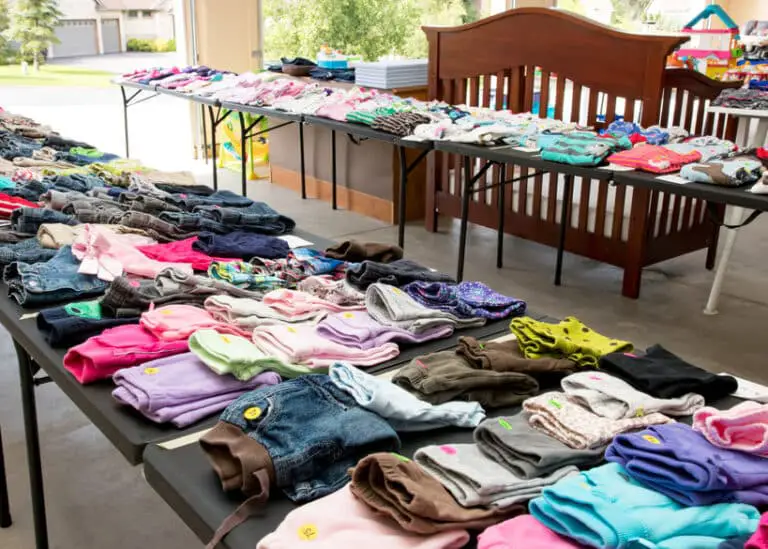Insiders Guide to Earning a Golf Scholarship
Many parents put off saving money for their child’s college education, and instead “invest” their money in their child’s development as an athlete in an Olympic sport like golf, tennis, baseball, soccer, or volleyball in the hopes of earning a scholarship. While this article is catered toward the wannabe college golfer, a lot of it applies to athletes in all of the Olympic sports. On the other hand, it does NOT really apply to the revenue-generating sports of football and men’s basketball.
Source of this Information
I am not a college coach and nor I did not play college golf. Last month I attended a seminar catered to college juniors who want to play college golf, along with their parents.
There were coaches present from premiere D-1 national championship contender schools, mid-major programs, as well as an NAIA school.
There were also youth golf coaches that had coached many high school athletes that have recently graduated and gone on to play college golf.
So while I am not an expert, this information was passed along to me by true experts.
Most Good High School Golfers Can Play College Golf Somewhere
If a good high school golfer wants to extend his competitive golf career into college, there is probably a spot somewhere. By somewhere, they mean not only NCAA D-1, D-2, and D-3 programs, but NAIA and Junior College as well.
If you cast a wide enough net and are willing to play virtually anywhere, you can probably find a spot.
Playing at an elite Division 1 program, however, is extremely difficult.
Also, NCAA D-3 might offer academic grants to bring the tuition price down if you are a good student, but you are generally not getting an athletic scholarship. NAIA and JuCo you are also most likely not getting a “full ride” or anything close.
How Scholarships Work
Division 1 men’s golf teams can offer 4.5 scholarships at one time. Division 2 is 3.6. For women, the D-1/D-2 numbers are 6/5.4.
Most D-1 men’s teams carry 10 players. Most teams break these up and give each player a percentage of a full ride. So on average, you are only getting 45% of your tuition paid for; sometimes less if the coach wants to give a top player more money and a bottom or a new player less.
Women’s teams generally carry 8 players so getting a full-ride or close to a full-ride is more common.
If you are playing at an out-of-state public school, keep in mind you are considered out-of-state when it comes to tuition. So if you are an amazing golfer from Texas and get offered to play for UCLA, you are considered an out-of-state student when it comes to tuition. So instead of getting the $15K rate for in-state, it is $45K per year. So if you get 45% off, you may still be on the hook for $25K.
A lot of states participate in discounted tuition programs for students in their region. For instance, the Western Undergraduate Exchange offers a kid from Arizona a reduced tuition (instead of 3x in-state rate, it is about 1.5x) if they go to UNLV in Nevada. Same thing for a kid from California attending the University of Hawaii. Using the 45% example above, you would get 45% off of the reduced rate. So for instance, the University of Hawaii tuition for WUE participants is $17K; a 45% scholarship would reduce your tuition down to about $9500.
Other regions like the South, Midwest, etc. have similar programs.
Some of the premiere schools in the West, however, like UCLA or the University of Washington do not participate. Check the website and definitely apply early for these programs if you are headed to a participant school. This is a key way to bring the tuition cost down for athletes.
How to Contact Coaches
Many teams have forms on their website that allow you to enter your information as a prospective recruit. Besides your basic contact info, some ask you for specific golf-related info like how long you hit a particular club, tournament scores, strengths/weaknesses, etc.
The coaches at the seminar did NOT recommend using a 3rd party recruiting company to contact them. They said they get so many emails from them that they instantly delete them.
You can also email coaches. Some of the things you want to make sure you mention in your email is your name, graduation year, some recent scores, your upcoming tournament schedule and your connection to the university. You don’t have to be a legacy or anything like that, but they would like to see that you have some interest specific to their university and aren’t just blindly sending identical emails to every school in America.
For instance, “My family has vacationed in Michigan many times and on our last trip, we drove by the Western Michigan campus and I loved it,” or “After my golf career, I would love to work in Silicon Valley, which makes San Jose State the perfect fit for me.”
If you have social media (primarily Instagram for high schoolers), make sure you have some pictures of yourself playing golf so coaches can see it is a passion of yours. Do not have any “red solo cup” type of photos where you are or might be drinking. Don’t post anything showing bad decision-making. Coaches are heavy users of Instagram.
Someone asked how much time players should spend contacting coaches. The answer was that if you are spending a certain amount of time and getting no response, then spend more time and cast a wider net until you get a response.
Be Realistic
Everyone wants to play D-1 at a top school, typically warm weather where you can play year round. So if you are not consistently winning or placing top 5 in local or AJGA tournaments, you might want to expand your pool of schools that you are interested in.
Look at cold weather schools where you spend an extended period of time in the Spring semester on the road. Look at D-2 schools or below. There are almost 300 D-1 schools, so focus on the ones in the bottom 100.
Think like a coach. This is not little league. Coaches in college want to win. They do not want their career to stall out or potentially lose their job. A coach does not want to recruit a kid that will be his 9th or 10th best player when only 5 players play in a typical tournament. He wants to recruit a kid that will be in his top 2, which will allow the next 3-4 golfers to slide back a spot.
So look at the GolfStat rankings and see the average tournament score for the #2 player. Just as an example, D-1’s 100th ranked men’s team at the time was Maryland and their #2 golfer averaged 72.2. The 200th ranked team was Winthrop and their #2 averaged 73.44. For women, it Kansas was 100th and the #2 shot 74, McNeese was 200th and their #2 shot 76. Sometimes a team will have a stacked top 2 then drop off, so don’t draw too many conclusions, but those #’s are are a good starting point.
Local Tournaments are OK
If you don’t have the money to travel to every expensive AJGA event, but are dominating your local tournaments, then coaches will find you.
They did make the point that if you are a desert golfer, you should probably play at least some tournaments with more trees and different weather conditions.
Also, some players do not play on their high school golf team and just do tournaments. The general consensus of the coaches was that they think high school golf is a good thing and teaches the player about teamwork. There is no detriment to play high school golf.
Some Things Coaches Watch For Besides Scores
Coaches obviously like to see players come into a tournament and shoot great scores.
However, there are other things they look at. Are parents doing everything for them from getting their bag ready in the parking lot to coaching them on the practice green? Is the player respectful to others? How does the player handle adversity when they miss an easy putt or hit the ball out-of-bounds? Does the player have a temper? Does the player blame others like his/her parents when the player makes a mistake?
Do Teams Have Walk-Ons?
The coach from a major D-1 school said that there aren’t any walk-ons from the traditional sense of having a try-out and picking one person out of 100 to join the team.
However, there are recruited players that don’t get any scholarship money because none is available. They are still part of the team, they just don’t get any money their freshman year. If they do well and a scholarship becomes available, then they may get some down the road.
Coaches said that players will contact them and say that their parents have money and they don’t need a scholarship, they just want to be part of the team and will pay their own way.
He said what the players don’t realize is that each player costs the team $100,000+ when you add in everything from travel to practice time to uniforms to training table, and on and on and on. And there are limited spots at their facility when it comes to practice. So there is no such thing as bring a player on for free.
What Questions Should You Ask a Coach?
You want to ask the coach how he/she picks the travel team and how often does the team change. You want to watch how the coach coaches players in a tournament setting. You want to ask the coach about the practice facility and what a typical practice looks like. You want to ask about expectations for an incoming freshman. Also, ask about majors and what is realistic when it comes to academic-athletic balance. Some coaches will direct players to only certain majors or to defer their decision on major out further in order to focus on golf.
A parent might also ask the coach about how much or little they should be involved in their son/daughter’s golf at that school.
After the coach answers your questions, you also want to research whether this is the right academic fit for you. What if golf does not work out? Is there a major that appeals to you? Are you OK with the weather? Remember you will be living in this place for the next 4 years.
You Have to Make a Lot of Sacrifices
You are generally not going to have a balanced college life of academics, social life and your sport. Your sport is going to be like a job. Even if the team only practices for 2-3 six days a week, you will expected to practice on your own outside of that for an extra 3-4 hours every day.
Just don’t go in blindly thinking you will have a completely normal college experience as you will not. There are not enough hours in the day to study, socialize and practice.
Final Thoughts
Your chances of “investing” a large sum of money in youth golf and having your child pay you back by going to college for “free” are pretty low. Most scholarships are partial and many golfers don’t want the massive time commitment that comes with college golf. That being said, the youth golf and/or college golf experience can be rewarding in many other ways.
As a parent, the best thing you can do is put your child in a position to succeed in life. Don’t apply excess pressure; instead, let them choose their own path. If that is college golf, that is great. If not, just remember that every time you finish watching them play 18 holes, you don’t focus on the negative, but you just thank them for letting you watch them play.







